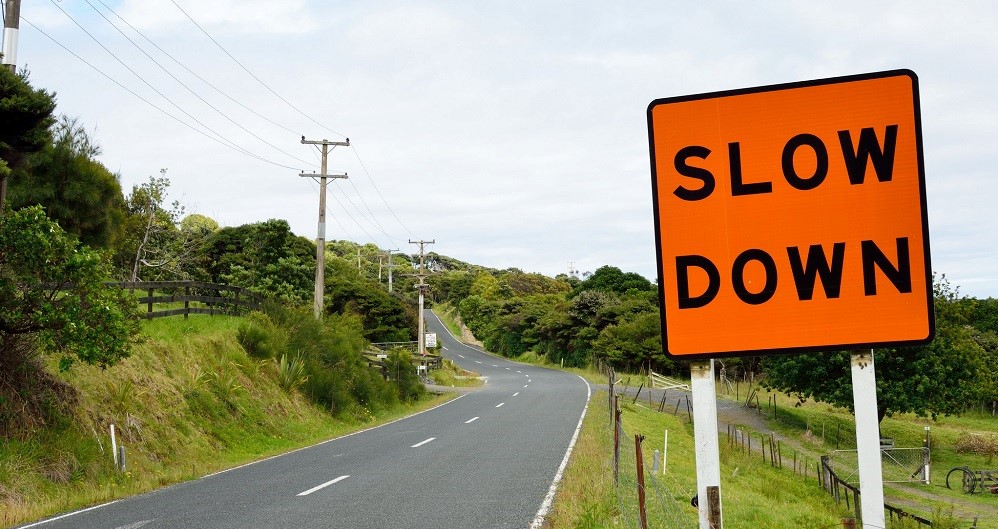“Slow down”: places on the planet with the “slowest Internet”
In the east of England there is a county of Suffolk. And here, in the village of Trimley Saint Martin, the “slowest Internet” in the whole of Great Britain (as of December) is 0.68 Mbit / s.
Locals have to wait eight hours to download a 45-minute video. This speed is 53 times lower than the UK average.
And this is not an isolated case in the world. In our article, we will talk about other places on the planet where the use of the Web is a real test. / Flickr / Tristan Schmurr / CC

Prior to Suffolk, the British 1.3 Mbit / s anti-record belonged to the village of Miserden in Gloucestershire. Journalists compared the "level" of local communication with the state of affairs on Everest - where the average access speed was one and a half times higher.
In the United Kingdom, there were other places, especially in rural areas, “lagging behind” the minimum speed of 10 Mbps recommended by the country's government. According to 719 thousand speed tests conducted by the expert organization “Which?”, 11 (out of 389 investigated) municipal districts do not satisfy this requirement. Although the average broadband speed in the UK is 36 Mbps.
Of course, in developed countries there are such problems .only in sparsely populated areas. For example, similar situations occur in Ireland. On the other hand, in the world there are entire countries and even continents that are forced to put up with "low speeds."
According to the Do Speed Test from September 1 of this year, the country with the “slowest” broadband access is Libya - here more than 95% of the population does not have access to the network. The five “slow” include Nepal, Nigeria, Iran and India.
Cable.co.uk studied the situation in 39 countries in Africa, and in none of them the threshold of 10 Mbps was reached . If you take into account the speed of mobile Internet, then on the African continent there are countries that are ahead of the United States in this indicator. For example, in Kenya, the average speed of mobile Internet is 13.7 Mbps (versus 10.7 Mbps in the USA).
One way or another, everyone depends on the infrastructure and the cost of its construction. If we talk about areas with low population density, then the payback period of such investments is significantly different from the situation in the city.
To illustrate, you can recall the example of South Korea, which is known for its fast and cheap internet. The population density per square kilometer is more than 500 people. Here, given the rather high density of development, infrastructure investments look much more “interesting” compared to conventional American villages where private houses are located at a great distance from each other.
Another reason for the “slowdown” is the lack of competition. As a rule, in countries with fast and cheap Internet, one of the main development drivers is preciselyshe is . On the other hand, in some cases, the low level of competition can be explained by the fact that few people want to "enter" the market, requiring the construction of infrastructure in hard-to-reach areas (without support there is no benefit ).
In addition to the capabilities of the communication line, the direct perception of the “speed” of the connection is affected by the way the content delivery process is organized. For example, as of 2015, Google had seven data centers in the United States, four in Europe, two in Asia, one in Latin America and not one in Africa. In this situation, the content will “get” from Google to conditional Kenya, for example from London, which will negatively affect the user experience when working with various sites and resources of the corporation. Recent Internet Society Reportconfirms that the lack of local infrastructure is one of the key issues. This is why, for example, Netflix deploys servers on the continent.
The Philippines has several “excuses” for the low speed of the Internet in the country. The republic consists of 7100 islands, which complicates the laying of networks. It also affects the cost of Internet access. In 2014, residents of the islands were offered to pay about $ 20 per month for a 2 Mbps tariff.

/ The Flickr / reynermedia / CC
Communication quality has many socio-economic consequences. It has been established that the “slow Internet” is not the last factor forcing young people to leave rural areas.
In Lagos, Africa, where a modern technology ecosystem is emerging, Internet access issues threaten the loss of both developers and their potential customers. Moreover, even a 10 percent increase in the audience of Internet users can increase the volume of international trade by 0.4-0.6%, if we talk about in African countries.
The problem pushes the authorities to decisive measures and even becomes one of the factors of the political struggle (the example of the Philippines).
However, not all countries are trying to solve the problem of “slow Internet”. For example, Australia is on the 50th line in the ranking (11.1 Mbit / s on average).
The government had plans to create an expensive high-speed network, but this would lead to more expensive communications for subscribers. People reacted ambiguously to such plans, and experts said that there would be no demand for such a service. Therefore, probably, the situation with the “slow Internet” will not change on this continent.
Related Content from VAS Experts Corporate Blog:
Locals have to wait eight hours to download a 45-minute video. This speed is 53 times lower than the UK average.
And this is not an isolated case in the world. In our article, we will talk about other places on the planet where the use of the Web is a real test. / Flickr / Tristan Schmurr / CC

"Zones of reduced speeds"
Prior to Suffolk, the British 1.3 Mbit / s anti-record belonged to the village of Miserden in Gloucestershire. Journalists compared the "level" of local communication with the state of affairs on Everest - where the average access speed was one and a half times higher.
In the United Kingdom, there were other places, especially in rural areas, “lagging behind” the minimum speed of 10 Mbps recommended by the country's government. According to 719 thousand speed tests conducted by the expert organization “Which?”, 11 (out of 389 investigated) municipal districts do not satisfy this requirement. Although the average broadband speed in the UK is 36 Mbps.
Of course, in developed countries there are such problems .only in sparsely populated areas. For example, similar situations occur in Ireland. On the other hand, in the world there are entire countries and even continents that are forced to put up with "low speeds."
According to the Do Speed Test from September 1 of this year, the country with the “slowest” broadband access is Libya - here more than 95% of the population does not have access to the network. The five “slow” include Nepal, Nigeria, Iran and India.
Cable.co.uk studied the situation in 39 countries in Africa, and in none of them the threshold of 10 Mbps was reached . If you take into account the speed of mobile Internet, then on the African continent there are countries that are ahead of the United States in this indicator. For example, in Kenya, the average speed of mobile Internet is 13.7 Mbps (versus 10.7 Mbps in the USA).
Causes
One way or another, everyone depends on the infrastructure and the cost of its construction. If we talk about areas with low population density, then the payback period of such investments is significantly different from the situation in the city.
To illustrate, you can recall the example of South Korea, which is known for its fast and cheap internet. The population density per square kilometer is more than 500 people. Here, given the rather high density of development, infrastructure investments look much more “interesting” compared to conventional American villages where private houses are located at a great distance from each other.
Another reason for the “slowdown” is the lack of competition. As a rule, in countries with fast and cheap Internet, one of the main development drivers is preciselyshe is . On the other hand, in some cases, the low level of competition can be explained by the fact that few people want to "enter" the market, requiring the construction of infrastructure in hard-to-reach areas (without support there is no benefit ).
In addition to the capabilities of the communication line, the direct perception of the “speed” of the connection is affected by the way the content delivery process is organized. For example, as of 2015, Google had seven data centers in the United States, four in Europe, two in Asia, one in Latin America and not one in Africa. In this situation, the content will “get” from Google to conditional Kenya, for example from London, which will negatively affect the user experience when working with various sites and resources of the corporation. Recent Internet Society Reportconfirms that the lack of local infrastructure is one of the key issues. This is why, for example, Netflix deploys servers on the continent.
The Philippines has several “excuses” for the low speed of the Internet in the country. The republic consists of 7100 islands, which complicates the laying of networks. It also affects the cost of Internet access. In 2014, residents of the islands were offered to pay about $ 20 per month for a 2 Mbps tariff.

/ The Flickr / reynermedia / CC
What does it affect
Communication quality has many socio-economic consequences. It has been established that the “slow Internet” is not the last factor forcing young people to leave rural areas.
In Lagos, Africa, where a modern technology ecosystem is emerging, Internet access issues threaten the loss of both developers and their potential customers. Moreover, even a 10 percent increase in the audience of Internet users can increase the volume of international trade by 0.4-0.6%, if we talk about in African countries.
The problem pushes the authorities to decisive measures and even becomes one of the factors of the political struggle (the example of the Philippines).
However, not all countries are trying to solve the problem of “slow Internet”. For example, Australia is on the 50th line in the ranking (11.1 Mbit / s on average).
The government had plans to create an expensive high-speed network, but this would lead to more expensive communications for subscribers. People reacted ambiguously to such plans, and experts said that there would be no demand for such a service. Therefore, probably, the situation with the “slow Internet” will not change on this continent.
Related Content from VAS Experts Corporate Blog:
